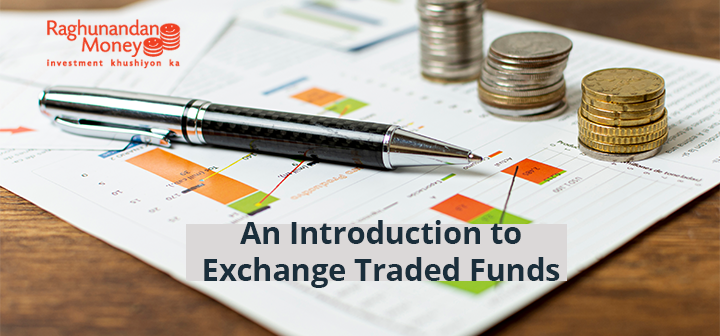Published : September 19, 2020

Exchange Traded Funds, popularly called as ETFs, have started gaining popularity among investors. ETFs are preferred as an investment instrument owing to the double benefit offered by them i.e., the flexibility of a stock and protection of a mutual fund.
ETFs are recommended by financial planners to investors who are looking forward to investing their money for long-term equity without taking too much risk. The popularity of ETFs can also be seen in the average asset management in the retail ETF category. According to the data released by the Association of Mutual Fund in India, the average asset management in the retail ETF category rose to Rs. 394 crore in March 2012 from Rs. 59 crore in March 2009.
ETFs invest in stocks comprising of an index. ETFs unlike mutual funds can be traded on the exchange without the involvement of a fund manager. Before we discuss how an ETF works, let us first, in brief, understand what an ETF is.
Just like mutual funds, exchange-traded funds collect a pool of financial resources from the investors. Their financial resources are further utilized to purchase various tradable securities including shares, debentures, and bonds. Most of the exchange-traded funds are registered with the Securities and Exchange Board of India (SEBI).
Exchange-Traded Funds (ETFs) are available in four broad categories including
ETFs, possess the characteristics of both stocks and mutual funds. They are traded on the various exchanges in the stock market just like stocks of some company via creation blocks. Most of the exchange-traded funds are listed on the major stock exchanges like NSE and BSE and can be bought and sold from there by the investors as per their need during the trading time.
The price of the ETF is dependent on the cost of the underlying assets that are present in the pool of resources. Hence, if the price of one or more assets rises, then the share price of the ETF also rises in proportionate value. On the other hand, if the price of the asset falls, the price of the ETF falls in proportion.
The dividend that the shareholder of the ETF will receive depends on the performance and the assets managed by the concerned ETF companies.
ETFs can further be classified as actively managed or passively managed exchange-traded funds.
Actively Managed ETFs: Actively managed exchange-traded funds are the ones that are operated and managed actively by a portfolio manager. The portfolio manager carefully assesses the stock market movements and undertakes calculated risk by investing the money of the investors in companies with high growth potential.
Passively Managed ETFs: Passively managed exchange-traded funds are the ones that follow the trend of market indices. These funds invest only in the companies listed in the rising charts on the stock exchange.
ETFs offer several advantages over the traditional open-ended index funds, these advantages are as follows:
Final Note
Exchange-Traded Funds are popular among the traders owing to their cost-effectiveness and high flexibility. ETFs just like mutual funds collect a pool of money from the investors who are not willing to invest in the share market directly and take the risk. Other than that, ETFs are available for intraday trading as well, a feature which the mutual funds lack. Though these instruments are gaining popularity among investors and traders, let’s not forget that they are riskier than mutual fund investments.

Enjoy flexible trading limits at
lowest brokerage rates ?
Open Your Investments Account Now
0Account Opening Charges
Life Time Demat AMC
Brokerage







Ensure the security of your investments by updating your nominee details in your trading & demat account online. It’s quick and hassle-free!
📌 Act Now to Stay Compliant
For assistance, contact our Customer Care at 0562‑4266666 and email askus@rmoneyindia.com.

IT'S TIME TO HAVE SOME FUN!
Your family deserves this time more than we do.
Share happiness with your family today & come back soon. We will be right here.
Investment to ek bahana hai,
humein to khushiyon ko badhana hai.
E-mail
askus@rmoneyindia.com
Customer Care
+91-9568654321